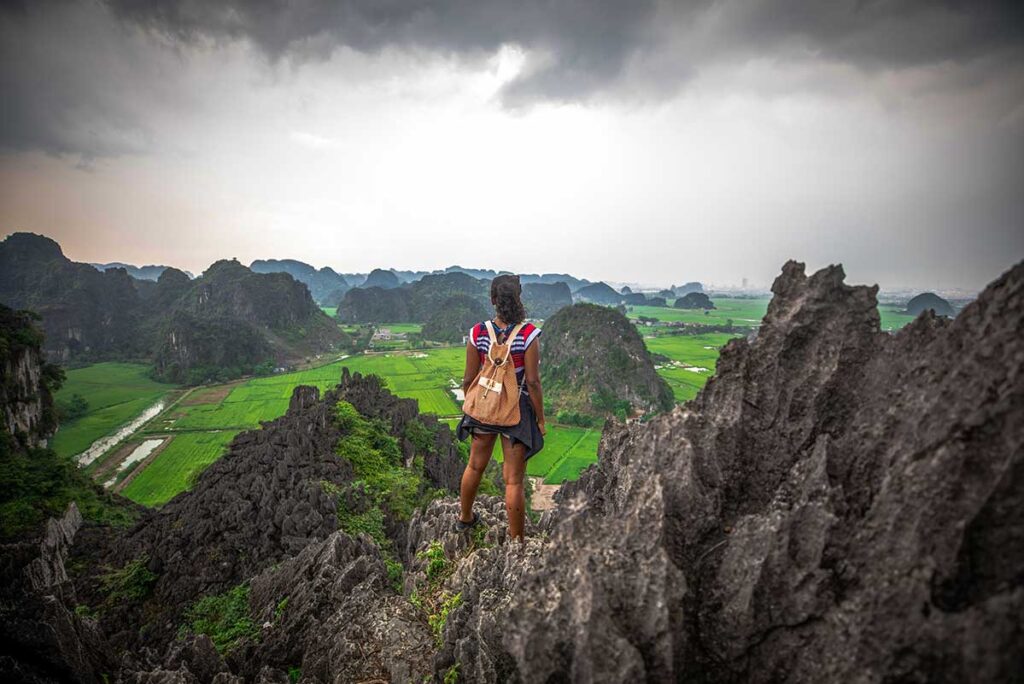What is Nui Chua National Park?
Nui Chua National Park is one of Vietnam’s most unusual protected areas, combining coastal scenery with rugged mountains, thorny scrubland, and coral-rich seas. Its landscapes feel very different from the tropical greenery that travelers often associate with Vietnam. Below you’ll find the background details that help put the park into perspective before looking at things to do.
Location & Geography
The park lies in Ninh Thuan Province, between Cam Ranh (Khanh Hoa) and Phan Rang–Thap Cham. It covers more than 24,000 hectares of land plus around 7,000 hectares of marine environment. The terrain ranges from rocky beaches and arid plains up to Mount Nui Chua at 1,039 meters, with inland forests, dry scrubland, and streams shaped by the area’s rare climate.
Scenery & Climate
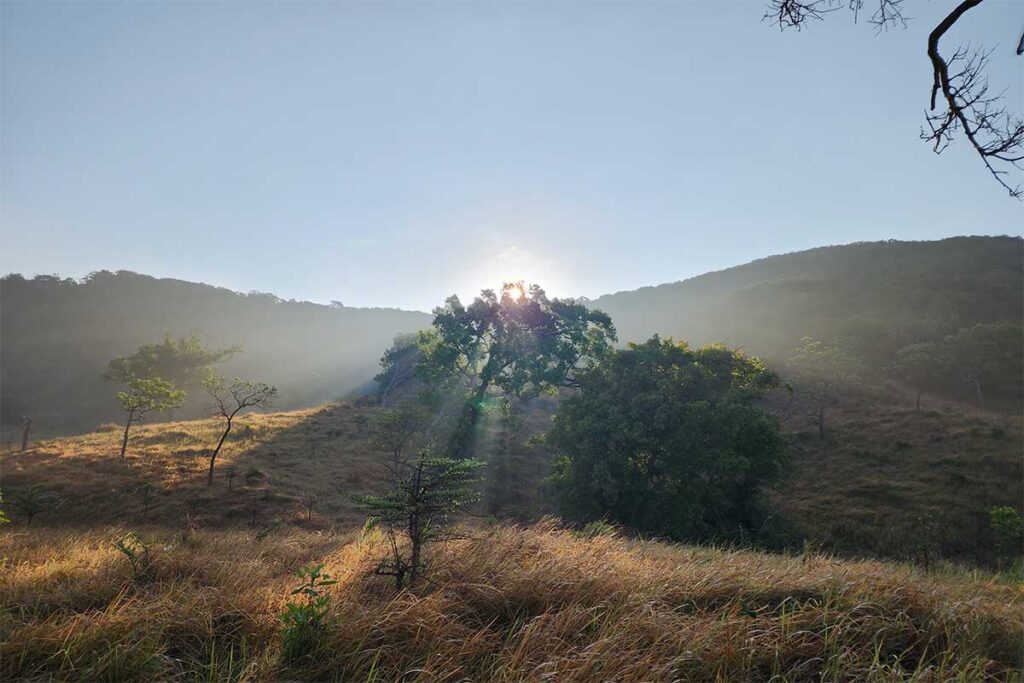
Ninh Thuan is the driest region of Vietnam, with average rainfall of just 650 mm per year. The climate is harsh, with long dry months and intense sun, giving the park a mix of semi-arid landscapes and patches of evergreen forest at higher altitudes. For conservationists, Nui Chua is a valuable biodiversity corridor, showing how unique ecosystems can survive in such a dry environment.
Coastal area
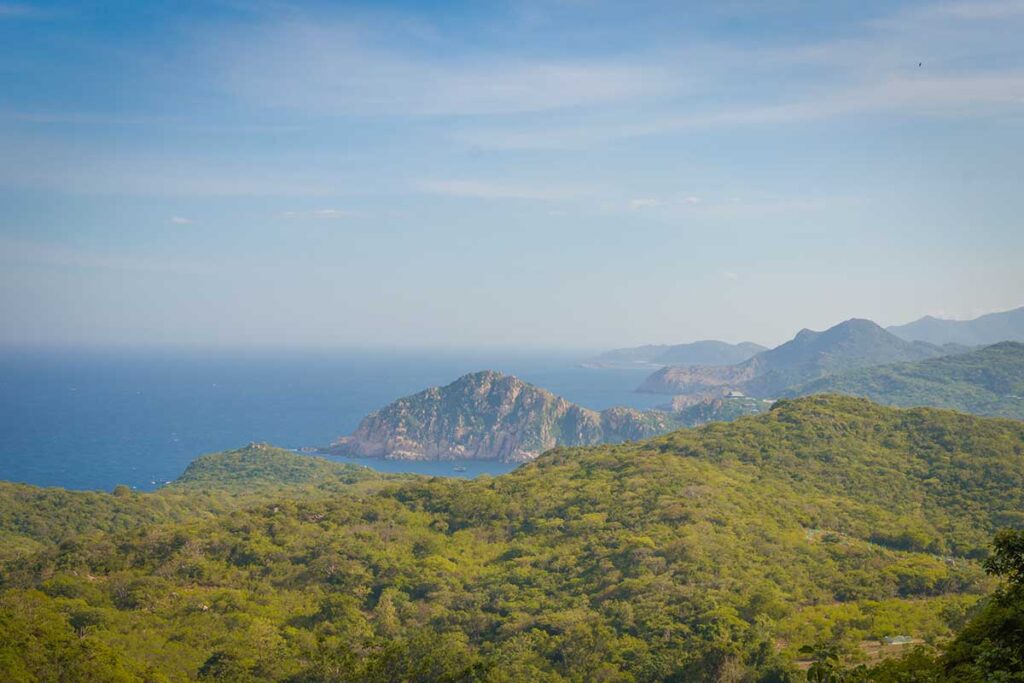
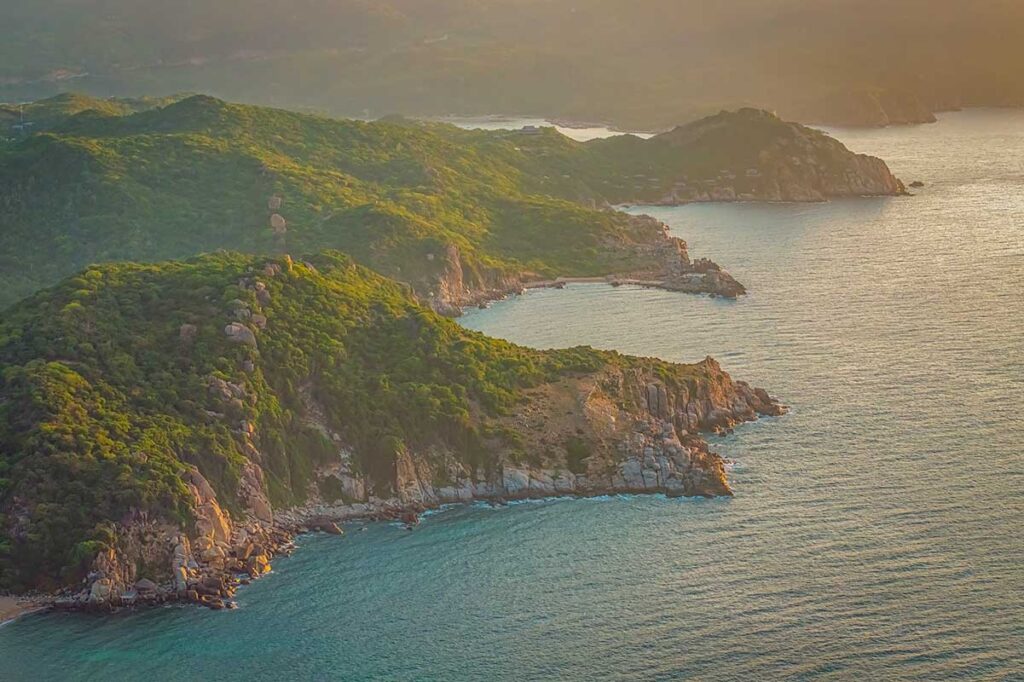
The most famous side of the park is its coastline. Travelers often visit for Hang Rai fossil coral reef, the dramatic Stone Park, or the scenic drive along road DT702 with its sea views. There are also small coves and beaches such as Bai Hom, Bai Thit (a turtle nesting beach), and the fishing hub of Vinh Hy Bay, where mountains meet the sea.
Mountains & Forests
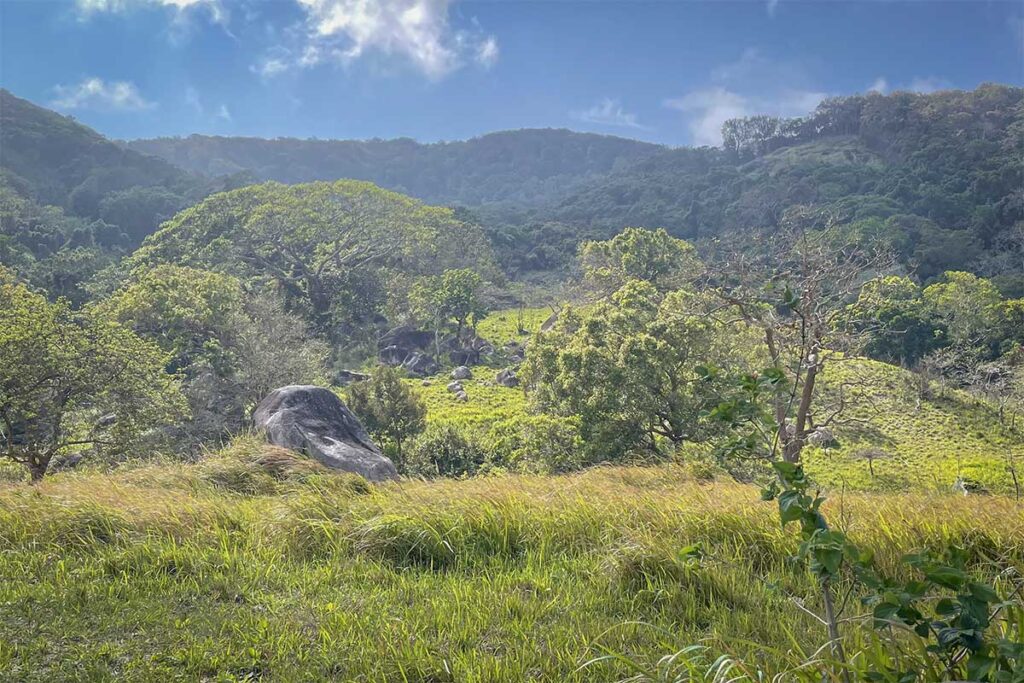
Inland, the park is much wilder. Higher elevations still protect pockets of evergreen and semi-evergreen forest, while mid-altitude areas are covered in thorny scrub adapted to the heat. There are trekking routes to peaks, streams, and waterfalls, but they are not as easily accessible as the coastal highlights.
Marine Environment
The park also extends offshore, protecting coral reefs with over 300 recorded species. This is one of the richest reef systems on the Vietnamese mainland, and it supports snorkeling and diving. Nui Chua is also one of the last places in Vietnam where marine turtles nest on mainland beaches, making it a rare conservation area.
Ethnic Communities
Around the buffer zones live Raglai and Cham ethnic groups, alongside the majority Kinh population. Agriculture, small-scale fishing, and traditional practices remain part of daily life. While not a cultural destination in the same sense as nearby Cham towers, the communities are closely tied to the park’s resources and conservation efforts.
UNESCO Biosphere Reserve Status
In 2021, Nui Chua was recognized as a UNESCO World Biosphere Reserve, underlining its global ecological value. The park represents the only dry forest ecosystem model in Vietnam and Southeast Asia. Today, it balances conservation with limited eco-tourism, which means visitors can enjoy unspoiled landscapes—but should not expect a highly developed tourism infrastructure.
Things to Do and See in Nui Chua National Park
For foreign visitors, Nui Chua is more about landscapes and outdoor adventure than about polished attractions. There are no big visitor centers or theme-park style facilities—what you find here is raw scenery, quiet coves, and trekking routes that require a bit of effort. The coastal road and a few well-known spots are easy to reach, while the interior forests and mountains remain harder to access and usually need a guide.
1. Scenic coastal drive (DT702)
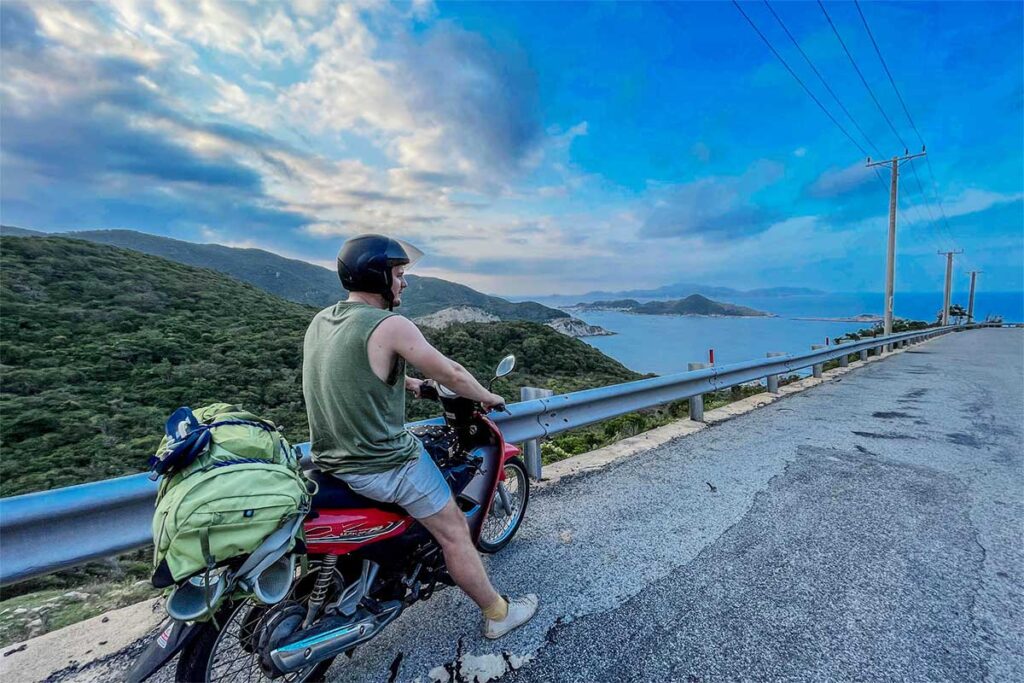
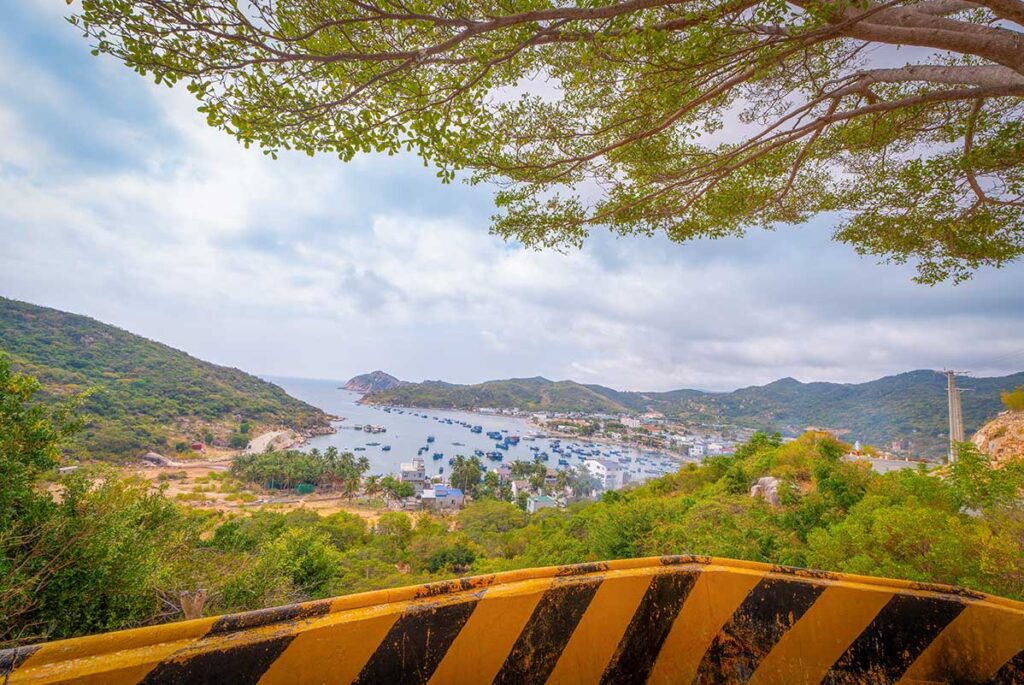
The road between Phan Rang and Cam Ranh is one of the most beautiful coastal routes in Vietnam. It winds past rocky headlands, sandy beaches, and fishing villages, with sweeping views of the East Sea. For many travelers, just riding or driving this road is the highlight of the park. Along the way, you can stop at Hang Rai fossil coral reef and the Stone Park, or detour into small coves that often feel untouched.
2. Hang Rai coral reef & Rock formations
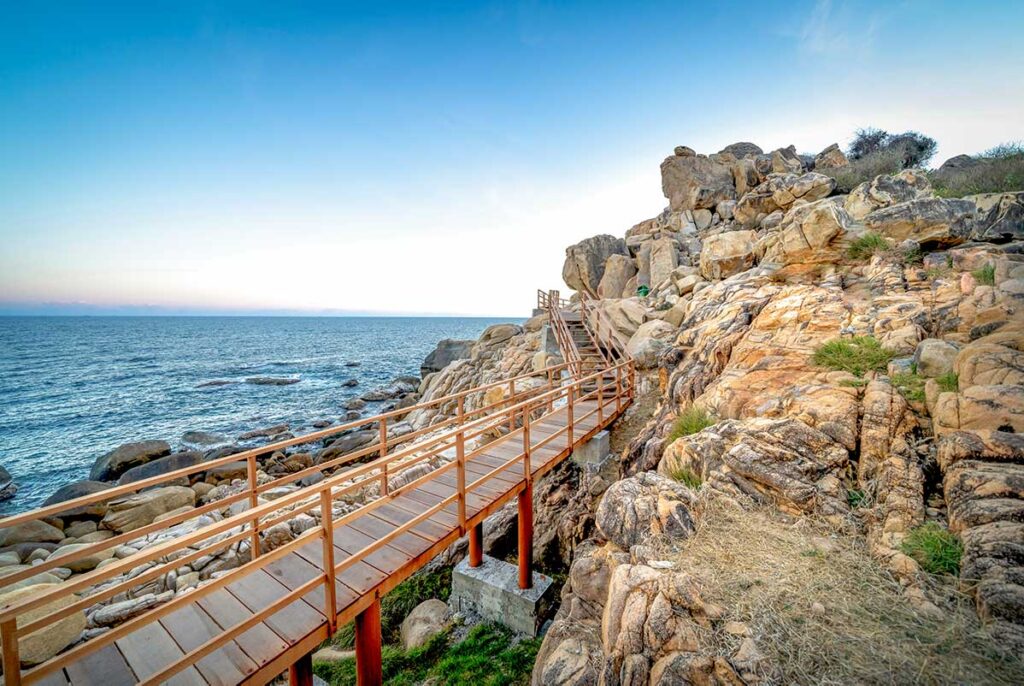
Hang Rai is the most famous site in Nui Chua. The exposed fossilized coral reef forms jagged platforms where waves crash with a dramatic “waterfall effect” during high tide. It is especially photogenic at sunrise and sunset, though you will rarely have it to yourself. The surface can be very slippery, so good shoes are essential. Despite being one of the busier spots, it is still impressive and worth seeing if you are in the area.
3. Stone Park (Bai Da)

Just south of Hang Rai lies the Stone Park, a natural field of bizarre rock formations. Spread across several hectares, the stones resemble animals, figures, or giant furniture, depending on your imagination. It feels like an open-air sculpture garden created entirely by weathering. This area is less visited than Hang Rai and makes a great stop for photography, a picnic, or simply enjoying the sea breeze away from the crowds.
4. Trekking & Hiking
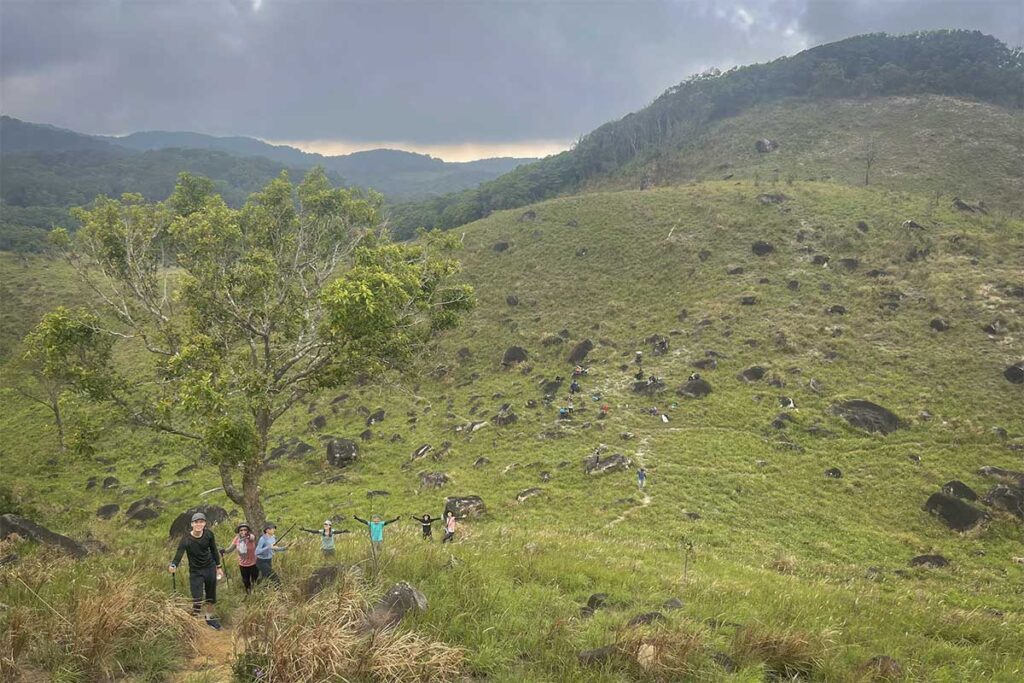
For those who want more than the coast, trekking into the park’s mountains offers a very different perspective. The ultimate challenge is Nui Chua Peak (1,039 m), but there are also shorter routes to places like Da Vach Lake, Lo O Stream, or Ba Tang Waterfall. Trails can be hot, dry, and demanding, and are best done with a local guide. This is not easy trekking, but the reward is solitude, views over the sea, and a sense of being in one of Vietnam’s least developed protected areas.
5. Vinh Hy Bay & Villages
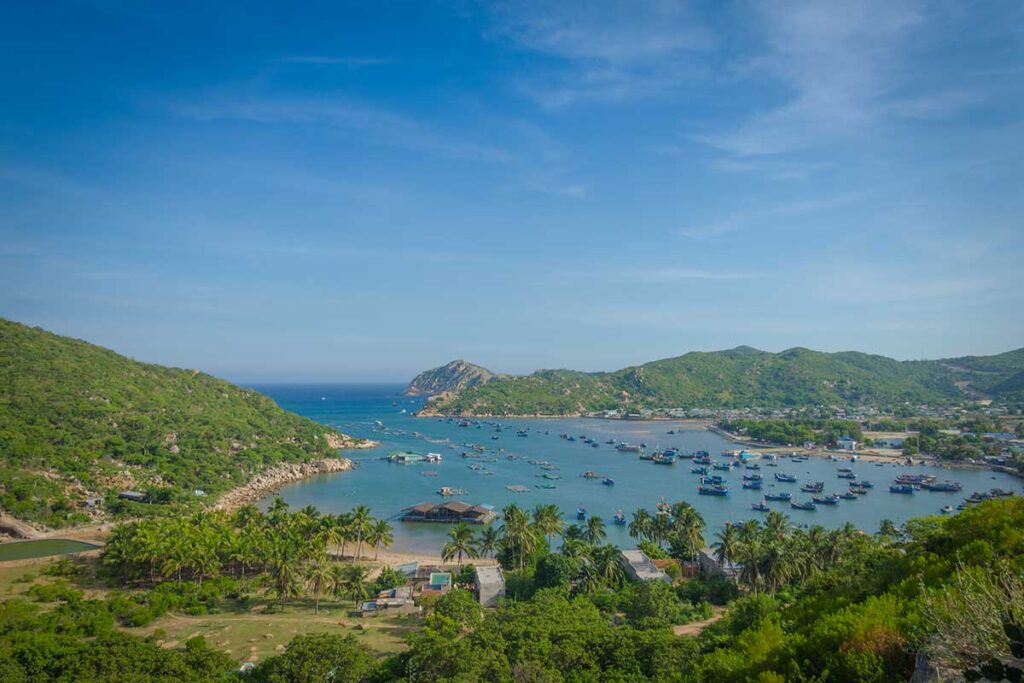
At the heart of the park’s coastline is Vinh Hy Bay, a fishing village set in a natural harbor. It is a good place to see daily coastal life, arrange boat trips, or try local seafood. From the bay, you can join boat tours for snorkeling, or even go squid fishing at night. Vinh Hy combines rustic village life with some small-scale eco-tourism, making it a practical stop if you want both scenery and a meal or short excursion.
6. Turtle nesting beaches (Bai Thit)
One of the most important but least accessible parts of Nui Chua are its turtle nesting beaches, particularly Bai Thit. This is one of the last places on mainland Vietnam where sea turtles still return to lay eggs. The nesting season peaks between April and June, and access is restricted to protect the turtles. Some conservation-focused tours may arrange limited visits, but for most travelers it remains more of a background story than an activity.
7. Snorkeling & Diving
Nui Chua’s marine zone protects coral reefs with more than 300 species, making this one of the better places for snorkeling in Vietnam. The water is usually clear and the marine life varied, though tourism infrastructure is minimal. Don’t expect dive shops on every corner—snorkeling and diving are mostly arranged through local boat operators at Vinh Hy. That makes the experience less polished but often more peaceful than in busier destinations.
8. Camping & Overnight experiences
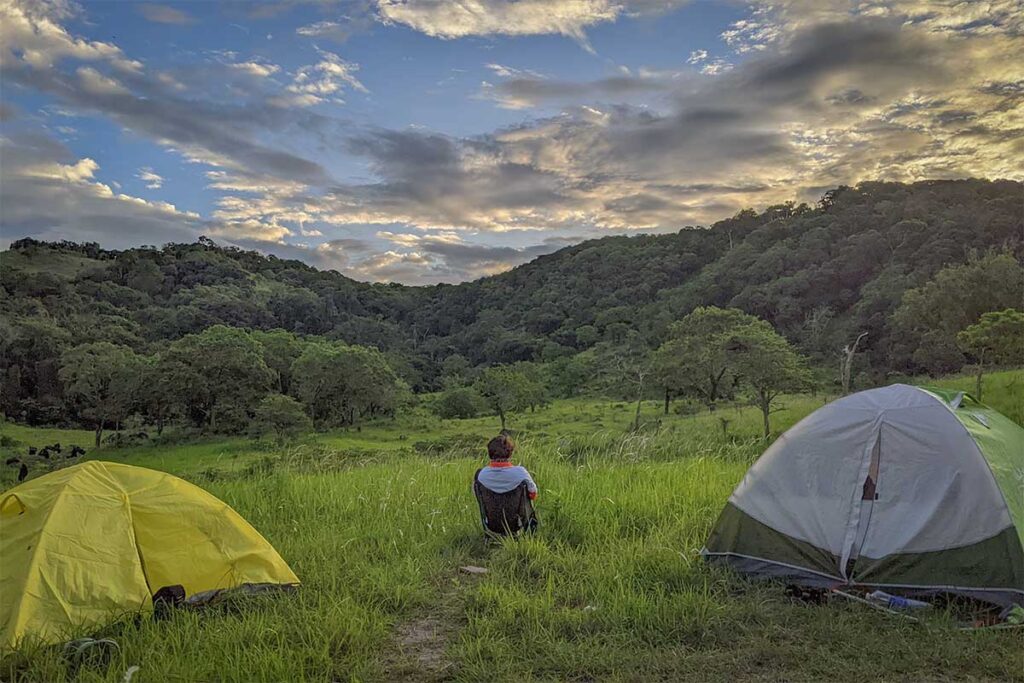
Camping in Nui Chua can take different forms, from remote beaches like Bai Hom, where you fall asleep to the sound of waves, to mountain and forest clearings reached on trekking routes. These overnight trips are usually arranged through local guides or eco-tours, as facilities are minimal and carrying your own gear is uncommon for foreign visitors. Expect rustic conditions—campfires, tents under the stars, and basic sleeping arrangements—making it rewarding if you enjoy the raw side of nature.
Best time to visit Nui Chua National Park
Nui Chua has a very different climate from most of Vietnam. Instead of lush greenery and heavy rains, this is the country’s driest region, which shapes both the scenery and the travel experience.
- Dry season (November–August): For most of the year, the park is hot and dry. From March to May, the heat is especially harsh and trekking can be exhausting, but skies are usually clear.
- Rainy season (September–October): Rain comes in short, heavy bursts rather than all-day storms. Some trails become slippery and coastal trips may be affected, though the season is relatively brief compared to central or northern Vietnam.
- Best overall period: March to September is the most rewarding time to visit. This is when snorkeling conditions are good, turtles come to nest, and the dry landscapes feel more accessible for trekking or camping. Just be prepared for sun exposure and carry plenty of water.
Location & Getting there
Where is Nui Chua National Park?
Nui Chua National Park is located in Ninh Thuan Province, about 30 kilometers northeast of Phan Rang–Thap Cham. It stretches along the coast and into the mountains between Cam Ranh (Khanh Hoa) and Phan Rang, making it a natural stop for anyone traveling the south-central coastline.
Best base city
The most practical base is Phan Rang–Thap Cham, the provincial capital. It has a wide range of hotels, transport connections, and restaurants, making it easy to arrange day trips or overnight tours into the park. Staying in Vinh Hy Bay is another option if you want to be right at the park’s edge, but accommodation there is more limited and simple.
By motorbike
The coastal road DT702 through the park is a favorite for motorbike riders, thanks to its winding curves and dramatic sea views. Riding gives you freedom to stop at beaches, Hang Rai, or the Stone Park. That said, it can be hot, windy, and tiring, especially in the middle of the day. Foreign travelers should be aware that Vietnam requires an international driving permit (IDP) and a valid motorbike license for legal riding. Police checks do happen, and accidents are common on coastal routes. If you are experienced and comfortable, it’s one of Vietnam’s most scenic rides; if not, it may be better to join a tour or hire a driver.
By car with driver
For most visitors, the easiest and safest way to explore Nui Chua is to hire a private car with driver from Phan Rang. This works well for day trips, letting you stop at viewpoints and coastal attractions without worrying about navigation or road conditions. Families, groups, or those planning to stay overnight in or near the park can also arrange a return transfer, with the driver waiting or coming back the next day. While it’s less adventurous than a motorbike, it’s far more practical if you want comfort and flexibility.
Where to stay
Accommodation around Nui Chua National Park depends on what kind of experience you want—rustic coastal life, city comfort, or high-end luxury. Options inside the park itself are limited, so most travelers stay in nearby villages or in Phan Rang.
Vinh Hy Bay
The small fishing village of Vinh Hy Bay sits right on the park’s coastline. It has a handful of guesthouses, homestays, and mid-range resorts, giving you a chance to stay close to the sea and enjoy fresh seafood. Standards are simple compared to city hotels, but the setting makes up for it. This is the most practical spot if you want to wake up inside the park’s atmosphere.
Phan Rang
For convenience, Phan Rang–Thap Cham is the best base. The city has a wide choice of hotels, hostels, and boutique stays, plus plenty of dining options and transport links. From here, it’s about a 45-minute drive to the park. This works well if you want to combine a visit to Nui Chua with trips to vineyards, Cham towers, or Ninh Chu Beach.
High-End resort
On the park’s edge you’ll find Amanoi, one of Vietnam’s most exclusive resorts. It offers villas overlooking the sea, spa retreats, and private access to parts of the coastline. While it’s priced for luxury travelers, it shows how diverse the accommodation range can be—from homestays to five-star international resorts.
Camping
For the adventurous, camping is possible at certain beaches such as Bai Hom. This usually needs to be arranged with local guides or eco-tours, as facilities are almost nonexistent. It’s a way to experience the park’s wild side, but not something most foreign tourists do independently since you’d need gear and local support.
Practical visiting information & Travel tips
Visiting Nui Chua is very different from a typical tourist spot in Vietnam. Facilities are basic, and much of the park is undeveloped. A little preparation goes a long way to make your trip more comfortable.
Entrance & Access
There is no formal ticket booth for most parts of the park, and entry to coastal areas like Hang Rai is often free. However, some activities—especially guided treks into the forest or mountains—may involve a fee through the park office or a tour provider. Certain conservation zones, such as turtle nesting beaches, require advance arrangements and special permission to enter.
Guides & Tours
If you want to trek, it’s best to go with a local guide. Trails are not well-marked, and the terrain can be hot and challenging. Official guides can usually be arranged through the Nui Chua National Park office or tour companies based in Phan Rang. For shorter visits, local operators also offer boat trips, snorkeling excursions, or camping tours around Vinh Hy Bay.
Food & Water
There are very few reliable food options inside the park itself. You may find small eateries in villages like Vinh Hy, but once you’re on the trails or beaches, you should not expect restaurants or shops. Bring your own snacks, meals, and plenty of water—especially if you plan to trek or spend the day exploring.
What to Bring
- Sun protection: hat, sunscreen, sunglasses, long sleeves.
- Sturdy shoes: for rocky, uneven paths and slippery coastal reefs.
- Insect repellent: mosquitoes are common in forested areas.
- Water and light food: no shops once you leave the main villages.
- Cash: for small expenses in villages, as card use is rare.
Connectivity
Mobile signal is patchy and unreliable once you move away from main roads or villages. Do not count on having reception during treks or on remote beaches.
Safety & Comfort
Nui Chua is known for its harsh sun and strong winds, so pace yourself and avoid trekking in the hottest hours. There are no toilets, trash bins, or tourist facilities in most parts of the park, so be prepared for basic conditions and carry out your rubbish. For those who are used to well-developed national parks, Nui Chua can feel rugged—but that’s also part of its appeal.
Is Nui Chua National Park worth visiting?
Nui Chua is best suited for adventurous travelers, trekkers, and nature lovers who enjoy raw scenery and don’t mind the lack of infrastructure. If you’re looking for a challenging hike, a remote camping trip, or one of Vietnam’s most scenic coastal drives, the park delivers a lot of reward.
For travelers who expect easy sightseeing, clear trails, or developed facilities, Nui Chua may feel inconvenient and basic. The standout highlights—the coastal road and Hang Rai fossil reef—are accessible even for casual visitors on a day trip from Phan Rang, but exploring deeper into the park takes more effort and preparation.
Overall, Nui Chua is a niche destination: not Vietnam’s most famous national park, but one of its most unique. If you’re curious about semi-arid landscapes, snorkeling reefs, and rugged coastlines, it’s worth adding to your trip. If comfort and convenience are priorities, you may prefer to stick with easier alternatives.


